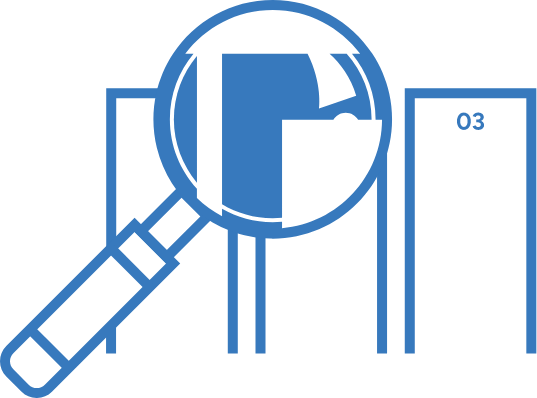A Hidden Cost of Education
There are obvious costs related to university study (fees, books, computer hardware, living expenses, travel, accommodation etc.) but parking might not be at the top of everyone’s list. Some campus parking permits, however, are going to cost more than the average student will want to pay.
Is driving to college avoidable?
Research has found that student commuter habits are changing. Vanderbilt’s 2019, 2022, 2023, and 2024 surveys revealed that the percentage of people walking to their campus had increased from 6 percent in 2019 to 13 percent in 2024. The survey also revealed that the number of students who commuted to college alone by car decreased from 79% to 49% over the five-year period.
If Vanderbilt’s research is representative of a national trend, the drop in lone student drivers versus the year-on-year growth in student numbers would mean that numbers of lone driving students is not changing that much.
Many students, in order to be able to retain the financial benefit of remaining at their parental home, have to endure commutes of between 60 and 90 minutes in order to get to their place of learning.
A Daily Battle Just to Park
You could argue that university promises not only career preparation and a path to lifelong learning, but also the development of other desirable personal qualities such as resilience, not least in the area of finding on campus parking!
The thing is, if every semester, like clockwork, thousands of students are reliving the same exhausting routine—leaving home up to an hour early, travelling for over an hour, circling lots, and still often arriving late to class, a solution needs to be found! The high demand for parking at university campuses leading to limited availability, could be resulting in students potentially doubling their commute time. Then it’s no longer just about finding a spot—it’s about surviving a system riddled with stress, confusion, and inefficiency.
There is a danger that experiencing parking issues and then paying a premium for the privilege, all at the end of a long drive, might even deter some struggling students completely!
Parking problems could cause bigger issues in the future
Parking has become a hidden cost of university—not just in money, but in time, stress, and lost opportunities (students report missing classes due to unavailable spots). Not only this but the stress and financial burden associated with university parking could contribute to overall anxiety, particularly for students who may already be facing financial challenges. This is significant if commuting becomes a challenge to campus participation or a barrier to academic success for the current cohort.
Then, it’s not just the students who report parking as an obstacle to learning either, many faculty members face parking struggles that obstruct their teaching efforts! You don’t have to look far online to find stories of parking frustration from universities across the country.
It should never be the case that researchers can’t run studies because participants can’t find places to park, or adjunct professors weigh up whether it’s even worth showing up on campus. It’s not just about convenience; it’s a problem with infrastructure that can undermine education and research.
And the biggest irony? Universities often sell more parking permits than available spots—betting on the odds instead of managing the demand. That’s a gamble not only with students’ peace of mind when entering a faculty parking lot, but potentially a gamble with their future and career!
Telling a Smarter Story with Paralign
Enter Paralign, an AI-driven parking vision technology designed to rewrite the university parking narrative. Paralign provides a robust solution including vehicle identification, parking session identification, and implied occupancy, that enables better space management and easier compliance. Paralign technology will help university parking facility operators to see things in their operation that they did not before and use new services to free up spaces. All to ensure more efficient usage of their facilities.
Paralign’s intelligent parking system uses AI-driven solutions to optimize space utilization, prevent misuse, create operator oversight and increase revenue. Users of university parking will benefit from a system which reduces operational costs (and this reduction can then be carried into a reduction in parking cost). Furthermore, facility managers are given complete control, providing seamless, hassle-free parking for staff, students, and visitors.
Parking data analysis that works
How does the system work to make parking management more efficient?
With data accumulating over time, university parking operators gain insights into parking demand patterns—down to the hour. If one lot consistently fills by 9:00 a.m. while another has openings until 11:00 a.m., they can redistribute permits more effectively.
With Paralign technology, permit oversales become informed decisions, not hopeful gambles. The whole experience becomes smarter and more compassionate.
Does AI Just Mean More Surveillance?
It’s a valid question. Students and staff are wary of systems that seem more focused on penalizing than helping. But Paralign is built on a fundamentally different principle: Empathy-driven infrastructure. That’s why Paralign uses anonymized data to track trends and improve the parking experience, meaning that students’ data is fully respected.
Rather than simply focusing on violations, Paralign proactively prevents them. Parking data analysis, when applied to peak usage patterns, can also help to improve signage and flag underutilized lots for better use.
By optimizing lot usage, Paralign can reduce the need to build new garages and offer clear ROI—enabling universities to invest in affordability, not expansion. Students shouldn’t be paying exhorbitant amounts just to park at the school they already pay to attend.




